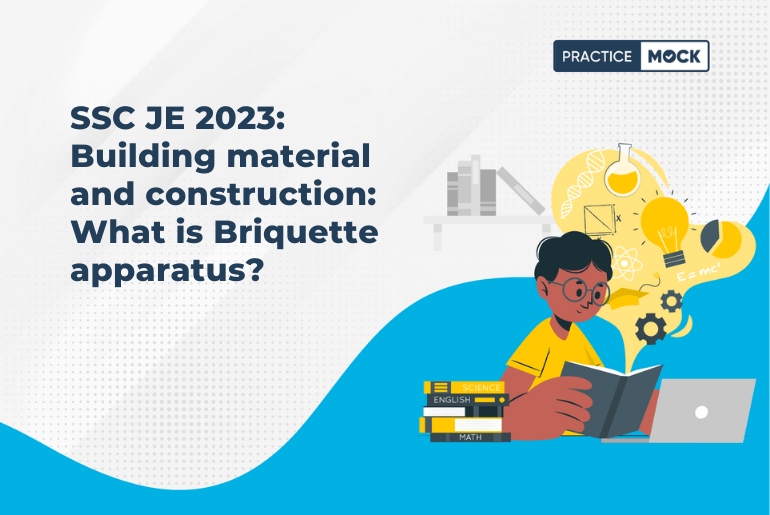What is the Briquette apparatus? How does it work? Do you know? If yes, how much do you know about it? In this article, we will reveal the mysteries of an optical square in a straightforward manner. You will acquire the skills to answer any question pertaining to the Briquette apparatus with finesse and accuracy. And do not miss the opportunity to take a Free Mock Test to assess your knowledge and abilities on this topic.
Take 1 FREE SSC JE Civil Engineering 2023 Mock Test And Learn How to Ace the Exam!

The briquette mould serves the purpose of casting cement briquettes used for testing tensile strength. It is a two-part split mould with thumb screws, specifically designed for brass manufacturing, allowing for easy and swift assembly and disassembly of the mould. The cast briquettes have a minimum cross-section of 25.4mm x 25.4mm and come with a steel base plate included.
Grab a Free SSC JE 2023 Mock Test & Check Your Knowledge on the Most Expected Topics!
Tensile Strength:
• Mortar is prepared using standard sand, in ratio 1:3 (ennor sand).
• Water content =
• Mortar is filled inside briquettes mould.
• Apply a downward force on this heap by beating with a spatula till water appears at the top. This is to ensure that the top surface is levelled.
• Perform the same process on the opposite side of the mold.
• Use the trowel blade to achieve a smooth surface finish.
• At least 12 specimens are prepared for testing, due to more uncertainty
• Place the molds in an environment with a temperature of 27 ± 2 °C and 90% humidity for a duration of 24 hours.
• After 24 hours, take out the briquettes from the molds and submerge them in clean water for curing until they are ready for testing.

Testing:
• Conduct tests on 6 briquettes after 3 days and an additional 6 after 7 days.
• Position the cement specimen between the anvils of the testing machine.
• Gradually apply the load on the specimen, starting from 0 and reaching 0.7 N/mm2 within 12 seconds.
• Record the load at which the cement specimen fails.
• Calculate the tensile strength by dividing the failure load by the surface area.
SSC JE 2023 Mock Test for Ultimate Practice
FREE SSC JE Civil Engineering 2023 Mock Test: Are You Ready for the Challenge? Find Out Now!
- Sign Up on Practicemock for Updated Current Affairs, Free Topic Tests and Free Mini Mocks
- Sign Up Here to Download Free Study Material
Free Mock Tests for the Upcoming Exams
- IBPS PO Free Mock Test
- RBI Grade B Free Mock Test
- IBPS SO Free Mock Test
- NABARD Grade A Free Mock Test
- SSC CGL Free Mock Test
- IBPS Clerk Free Mock Test
- IBPS RRB PO Free Mock Test
- IBPS RRB Clerk Free Mock Test
- RRB NTPC Free Mock Test
- SSC MTS Free Mock Test
- SSC Strenographer Free Mock Test
- GATE Mechanical Free Mock Test
- GATE Civil Free Mock Test
- RRB ALP Free Mock Test
- SSC CPO Free Mock Test
- AFCAT Free Mock Test
- SEBI Grade A Free Mock Test
- IFSCA Grade A Free Mock Test
- RRB JE Free Mock Test
- Free Banking Live Test
- Free SSC Live Test


